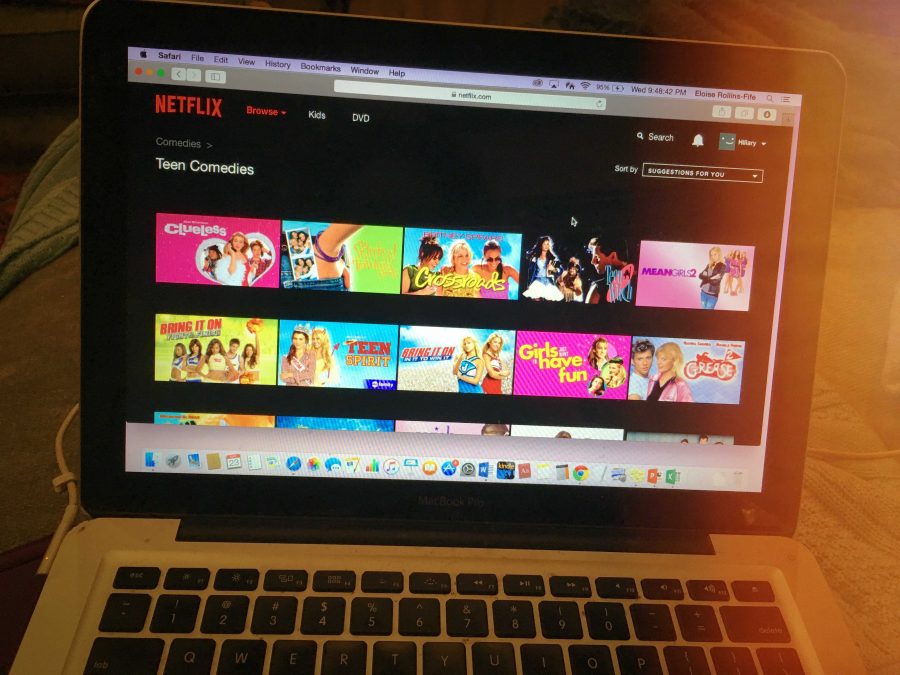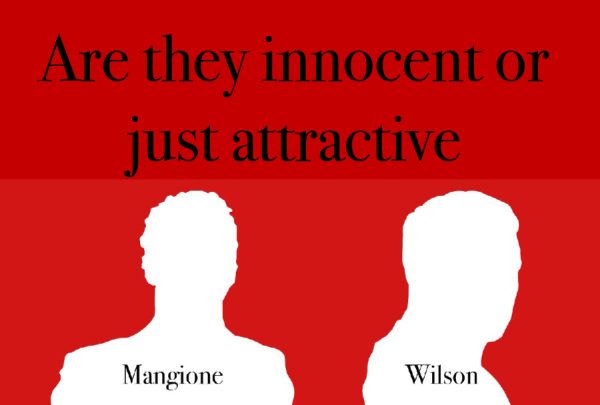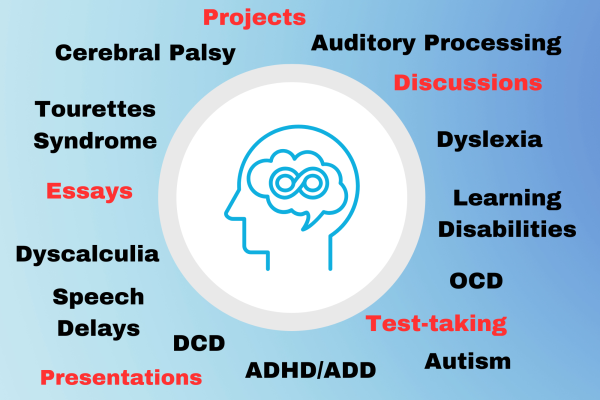Op-Ed: Someone save the teen comedy film — before it’s too late
Photo credit: Eloise Rollins-Fife ’17
The Netflix “Teen Comedy” page displays movie options. Although 14 of them were released in 2011 or later, only one of these movies was released in theaters by a major film distributer. In fact, the most recent box-office success in the bunch is 2005’s “Sisterhood of the Traveling Pants,” which barely qualifies as a comedy.
We are living in an era filled with suffering, discontent and injustice, but amidst all of these human hardships, there’s one tragedy we’ve neglected to acknowledge: the death of the teenage comedy.
Gone are the high school rom-com cliches, the oversimplified stereotypes and the crude humor. R.I.P., seemingly random dance numbers and classic, quotable catchphrases. As a society, we’ve collectively given up on a genre that practically defined the 80’s, 90’s, and early 2000’s teenage experience. In its place has come dystopian action flicks, introspective dramas and the dreaded “man-child” comedies.
Let’s back up. What exactly is a mainstream “teen comedy,” anyway? I’ve devised a list of several criteria a film must meet to qualify, and sadly, almost no movies from the past five years fit the bill.
- The movie must be a comedy. Not a drama with some witty humor, or a gritty but uplifting “dramedy”. An honest-to-god, light-hearted comedy.
- There must be a love interest. No high school comedy is complete without the forbidden romance between the nerdy girl and the popular jock, or the bad boy with a heart of gold who we all fall madly in love with for the duration of the 90-minute film.
- The film’s humor must be mainstream, and maybe even a little bit mindless. No subversive, ironic half-humor, please.
- It must take place in a high school (or sometimes college) setting or at least establish that all the main characters are of that age — having a high-school aged kid in the background of the middle-aged adults’ lives doesn’t count.
- It must be released in theaters.
Seems simple enough, right? Wrong. A quick look at Wikipedia’s list of teen films shows that hardly any teen films made in the 2010s display these characteristics, with a few exceptions (2010’s “Easy A” and 2015’s “The Duff” measure up best).
In case you’re thinking I’m making this all up and that movies that meet at least most of these criteria never existed in the first place, I’d like to take you all on a trip down memory lane.
In the 1980s we had John Hughes and Co., and with them came a new, never-before seen visibility of teenage-hood in popular media. There was “Ferris Bueller’s Day Off” (1986), “The Breakfast Club” (1985), “Sixteen Candles” (1984), “Weird Science” (1985), “Fast Times at Ridgemont High” (1982), “Can’t Buy Me Love” (1987) and so, so many more.
The 1990s brought an even bigger wave of teen comedy films to theaters, and a myriad of other teen-centric flicks as well. Movies like “Dazed and Confused” (1993), “Clueless” (1995), “Can’t Hardly Wait” (1998),”American Pie” (1999), “10 Things I Hate About You” (1999), “Drive Me Crazy” (1999), “She’s All That” (1999) , “Never Been Kissed” (1999) — seriously, what was up with 1999? — it certainly set a standard for high school life that reality can never quite measure up to. In addition, teen horror films and darker movies started becoming wildly popular.
Next came the 2000s, my personal favorite of the decades. In his Op-ed, “What happened to the ‘high-school film’?”, which inspired this article, Donald Shanahan opines that, “After the turn of the century, it all seemed to slow down. I think an unofficial sign that your trend or fad is past its prime is when it becomes a parody.”
I disagree. Though parodies entered the game, we also had movies like “Boys and Girls” (2000), “Bring it On” (2000), “Wet Hot American Summer” (2000), ” Get Over It” (2001), “Not Another Teen Movie” (2001) — OK, this is a parody, but it’s awesome — “Freaky Friday” (2003), “Confessions of a Teenage Drama Queen” (2004), “EuroTrip” (2004), “Mean Girls” (2004), “Sisterhood of the Traveling Pants” (2005), “It’s a Boy Girl Thing” (2006), “John Tucker Must Die” (2006), “She’s the Man” (2006), “Sydney White” (2007), “Superbad” (2007), “Nick and Norah’s Infinite Playlist” (2008), “17 Again” (2008), “I Love You, Beth Cooper” (2009), and…look, there are too many to name. Let’s just agree that the teen comedy didn’t die in the 2000s, ok?
So what exactly happened in the late 2000s and 2010s to kill this treasure trove of cinematic gems?
These decades saw a rise in the popularity of teenage fantasy and action novels, especially those geared towards teen girls, and along with these books came wildly popular film adaptations. We had “Twilight” (2008), “The Hunger Games” (2012), “Divergent” (2014), and “The Maze Runner” (2014), as well as other, stand-alone examples of this trend. Teens no longer wanted to see reality-based depictions of their high school lives, or at least that’s how it seemed. They’d rather experience action sequences and fast-paced dramatic conflict.
Two other types of films also came to occupy the space once reserved for teen comedies: the man-child flick and the indie film aimed towards young audiences. Sure, both of these types of movies existed before the 2000s, but no one can deny that Adam Sandler’s popularity skyrocketed in the last 15 years or that the number of quirky, low-budget dramas featuring teens has remained remarkably consistent over that same period.
Through this may seem like only loosely related data, it reveals what I believe to be the quintessential root of the trends I’ve discussed in this piece: light teen media is dying.
There is essentially no “teen market” anymore, at least not in the same way there used to be — it’s no longer a distinct, profitable demographic. All the replacement genres I’ve discussed above were made for teens, sure, but also for adults and for young children in some cases. The media that is created for teens is overwhelmingly dramatic in nature, suggesting that this generation may take itself more seriously than its predecessors in certain ways. When I talk to friends about the TV shows we watch, answers can include teen dramas, like “Pretty Little Liars” or “The Vampire Diaries,” but usually it’s far more popular to hear “adult” shows mentioned. When a comedy comes up, it’s almost certainly intended for adult audiences.
None of this is necessarily a bad thing. Dramas are great, and so are adult-oriented comedies. Patterns in media fluctuate and progress over time, and this is to be expected. I’m also analyzing these years with a very specific opinion in mind; it’s certainly possible to find movies released in recent years that contradict my argument. Rather than claim that there are NO current movies giving me the teen-comedy feels I’m searching for, I’d like to ask that you simply take stock of the movies released in the last five or ten years and ask: was this comedy meant for me?

Eloise Rollins-Fife joined the Oracle staff in 2015 and was promoted to co-Voices editor in 2016. She became the Managing/News & Features Editor for...








